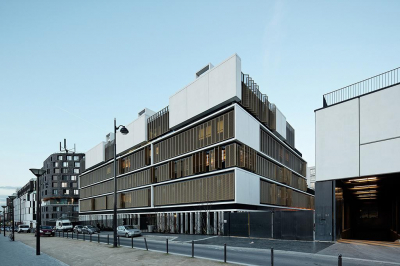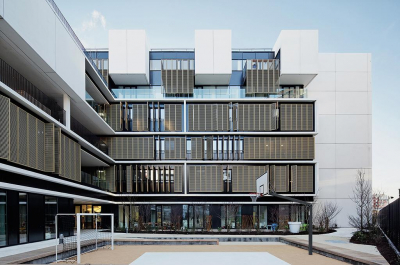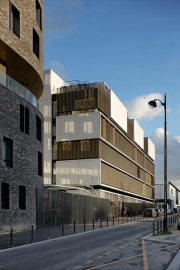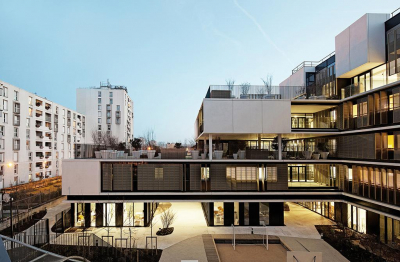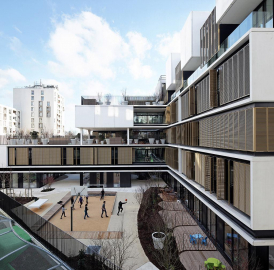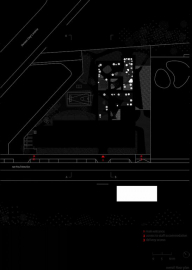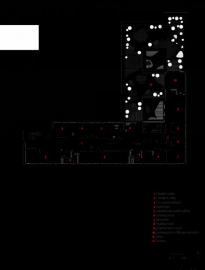Welfare Centre for Children and Teenagers
« Maison daccueil de lenfance Eleanor Roosevelt » is an emergency residential centre managed by the local department of child welfare in Paris. It provides emergency shelter for minors under legal guardianship.
The main purpose of the centre is to provide practical, educational and psychological support to these children and teenagers.
An emergency residential centre is both a childrens house and a care home where young people feel welcomed, protected and looked after. It is also a transitional place, where family links, rather than being severed, are encouraged under calm and compassionate supervision.
The notion of « emergency » must not be felt by children who indeed need to be reassured: this is a place where, at long last, they can be completely safe. With all this in mind, the architects designed a shelter where each floor is allocated to one age group only and where all childrens needs are respected.
There are two major constraints on the site. Firstly, the core of the plot is north facing. Secondly, the architectural program is highly dense and is not easily accommodated with the principal development zone plans. This could potentially result in severe lack of light into the building.
The architects therefore developed and L shaped structure with varying stepped levels in the centre, offering large recreational terraces on each floor. This layered system optimises access to daylight and open views at the very core of the building.
However, to optimise access to daylight further still, the architects decided to position the buildings around enclosed gardens with two main facade walls to the south and the west.
Each floor is meant as a single unit with its own specific use and therefore its own health and safety regulations.
The difficulty arose from managing different strict health and safety regulations, yet keeping a single identity for the whole building. For instance, the creche playground is made private and safe with the use of trees in large pots all around the area.
This type of institution is subject to constant change not only during the life of the building itself but also at all stages of the project. With this in mind, the architects have designed the building as a matrix giving scope for change not only once completed but also during the various stages of the project studies. For instance, the large corridors have not only be designed as passageways but can also have other purposes if need be.
To maintain a homely feel throughout, the architects were also asked to design indoor signage and furniture. Regular consultation with staff helped them create poetic, fun and dream like pictograms on indoor sign posts. They also chose to make the main staircase a major focal point like in a stately home. Emphasis was put on designing purpose built furniture.
The facade wall is wood framed with metal cladding whilst pillars, beams and floors are made from concrete. Concrete is self cleaning. It wont change colour over time, and will keep its original look.
This choice of self cleaning material is important to combat bad weather and pollution in Paris.

